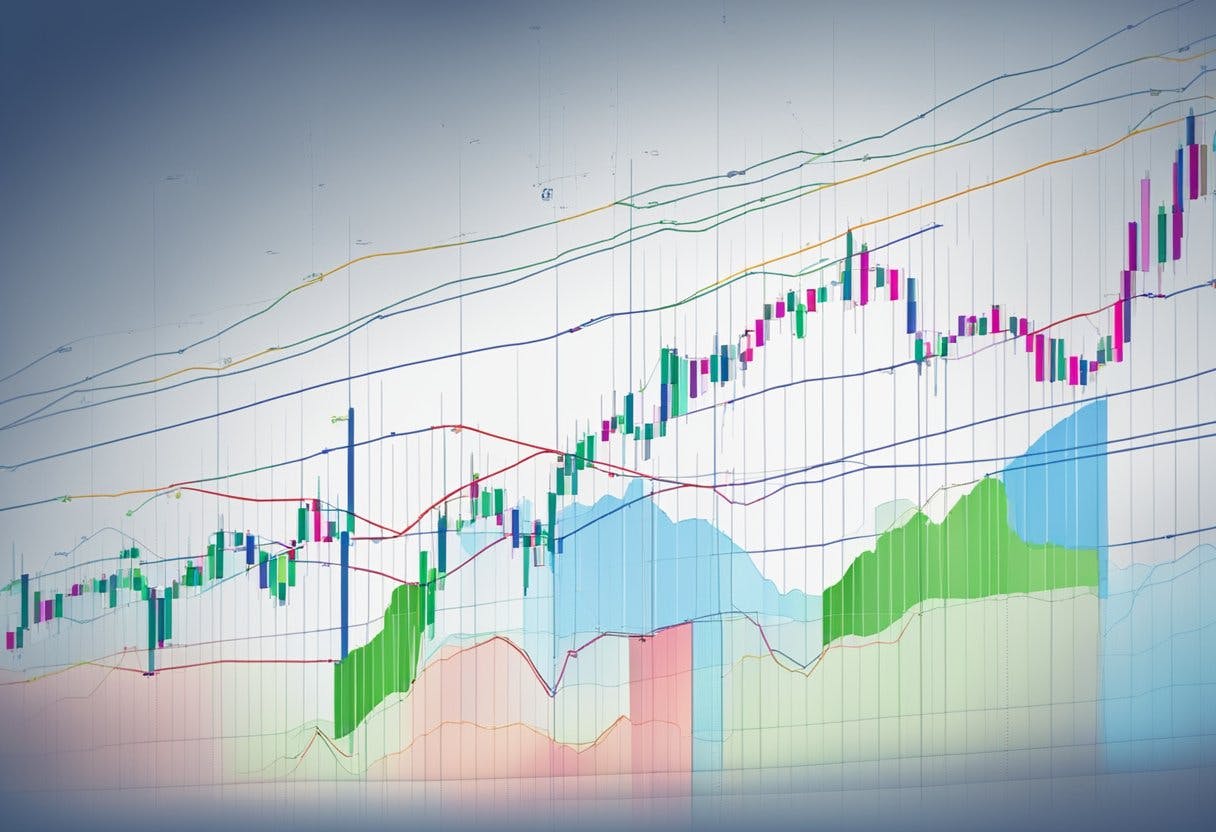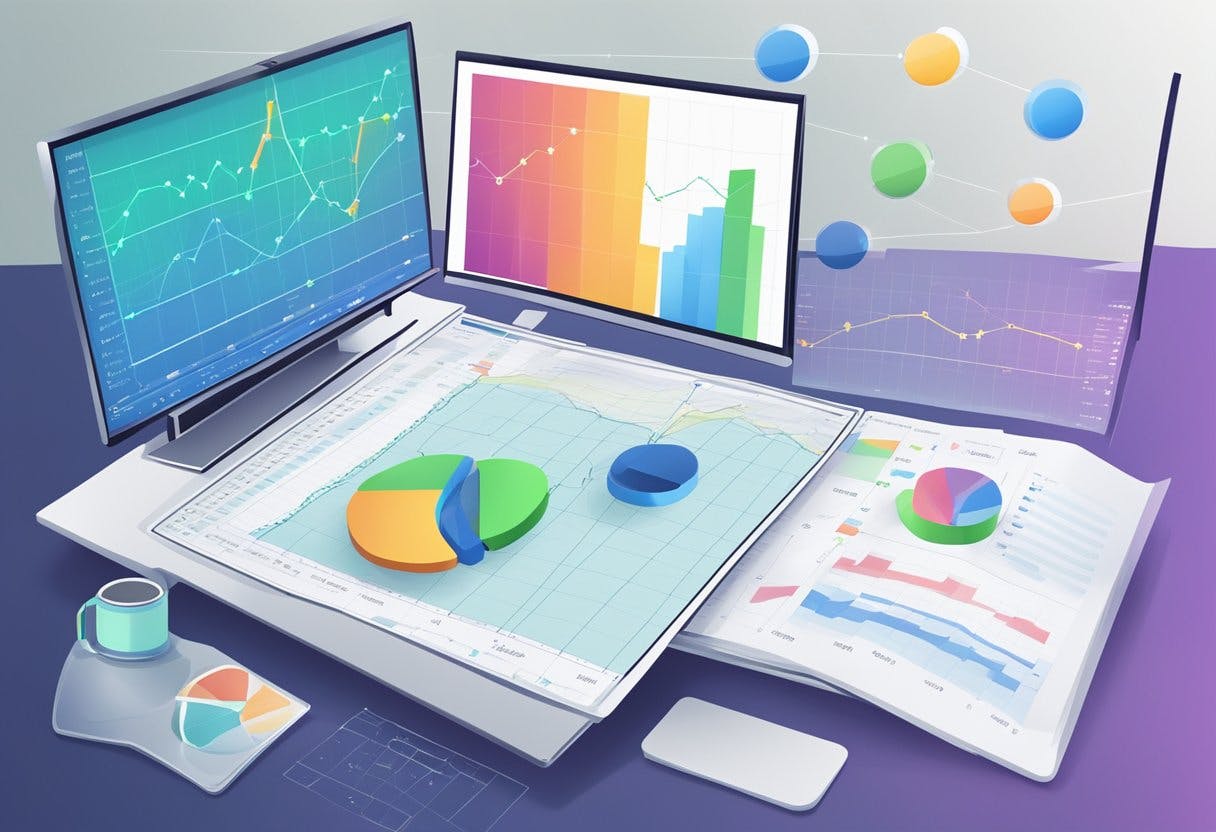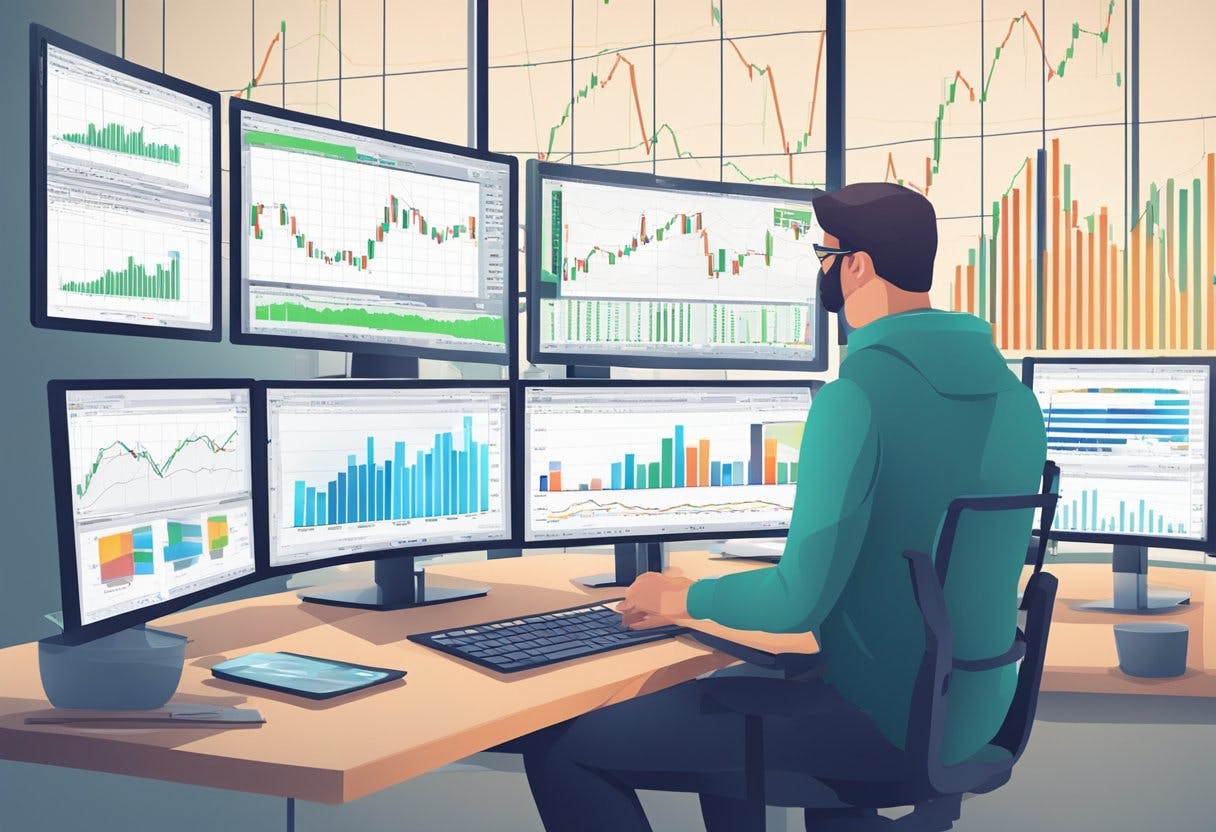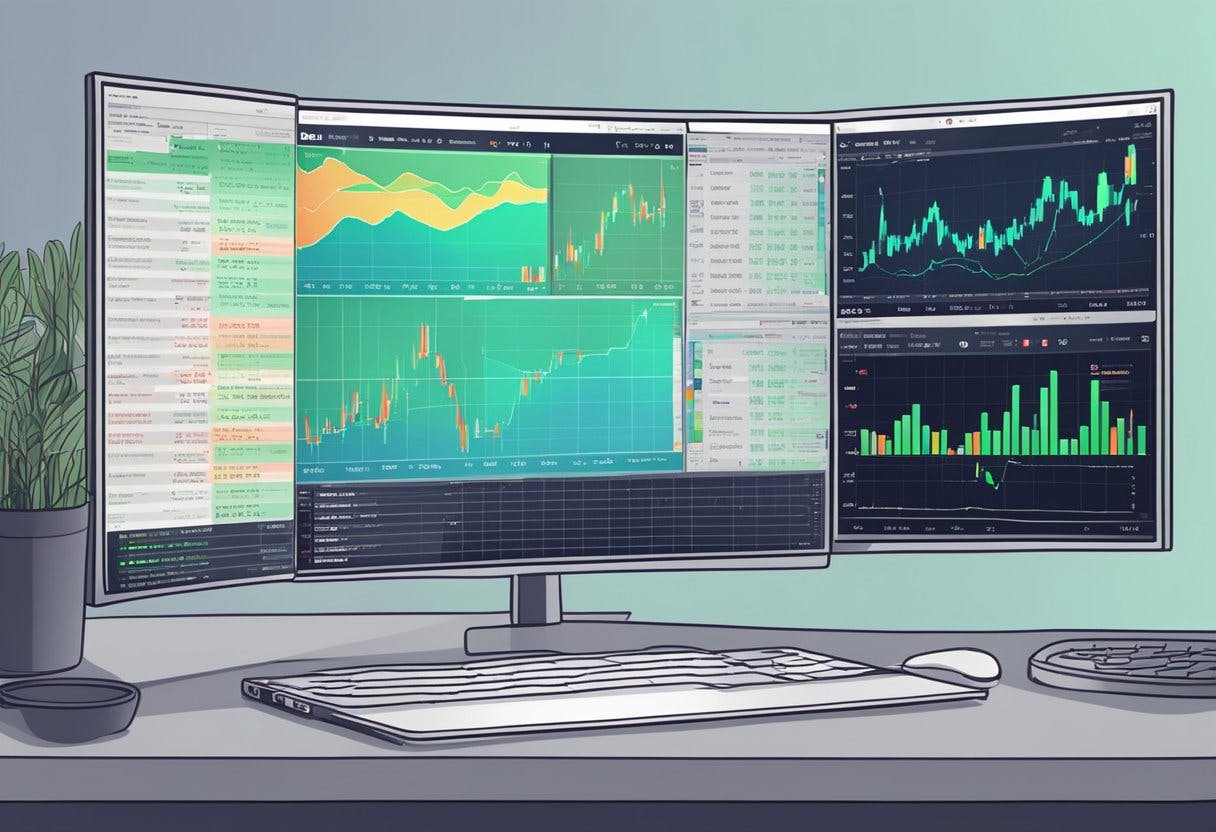
The Forex market is the largest financial market in the world, with a daily trading volume of over $5 trillion. It is a decentralized market where currencies are traded 24/7 across different time zones. Forex traders rely on various tools and techniques to make informed trading decisions, and predictive analytics is one of the most powerful tools in their arsenal.

Predictive analytics involves the use of statistical models and machine learning algorithms to analyze historical data and make predictions about future market trends and behaviors. In Forex trading, predictive analytics can be used to identify patterns in currency movements, predict market trends, and generate trading signals. By leveraging predictive analytics, traders can gain a competitive edge in the market and make more informed trading decisions.
Key Takeaways
- Predictive analytics is a powerful tool for Forex traders to analyze historical data and make predictions about future market trends and behaviors.
- By leveraging predictive analytics, traders can identify patterns in currency movements, predict market trends, and generate trading signals.
- Predictive analytics can provide traders with a competitive edge in the market and help them make more informed trading decisions.
Understanding Forex Market Dynamics

To make informed trading decisions, traders need to understand the dynamics of the forex market. The forex market is influenced by various factors, including economic indicators, market sentiment, liquidity, and volatility. By analyzing these factors, traders can identify patterns and trends that can help predict future price movements.
Economic Indicators and Currency Pairs
Economic indicators are important drivers of currency prices. These indicators include inflation rates, gross domestic product (GDP), employment rates, and interest rates. Traders can use economic indicators to analyze the strength of a country’s economy and its currency. For example, if a country’s GDP is growing, its currency is likely to strengthen.
Currency pairs are also influenced by economic indicators. Each currency pair has a unique relationship with economic indicators. For example, the USD/JPY pair is influenced by the US Non-Farm Payrolls report, while the EUR/USD pair is influenced by the European Central Bank’s monetary policy decisions.
Market Sentiment and Trading Opportunities
Market sentiment refers to the overall attitude of traders towards a particular currency pair. Market sentiment can be bullish (optimistic) or bearish (pessimistic). Traders can use market sentiment to identify trading opportunities. For example, if market sentiment is bullish on the USD/JPY pair, traders may consider buying the pair.
Traders can also use technical analysis tools, such as trend lines and moving averages, to analyze market sentiment. Technical analysis tools can help traders identify trends and patterns in the market, which can help them make informed trading decisions.
In conclusion, understanding the dynamics of the forex market is crucial for traders who want to make informed trading decisions. By analyzing economic indicators, market sentiment, liquidity, and volatility, traders can identify patterns and trends that can help predict future price movements.
Analytical Approaches in Forex Trading

Forex trading involves analyzing the market to determine the best time to buy or sell currencies. There are two main approaches to analyzing the forex market: technical analysis and fundamental analysis.
Technical Analysis and Indicators
Technical analysis involves analyzing price charts and using various indicators to identify trends and patterns in the market. Traders who use technical analysis believe that past price movements can help predict future price movements.
Some of the most commonly used technical indicators include moving averages, support and resistance levels, and oscillators such as the Relative Strength Index (RSI) and Moving Average Convergence Divergence (MACD). Moving averages are used to smooth out price movements and identify trends, while support and resistance levels are used to identify key levels where prices are likely to reverse.
Fundamental Analysis and News
Fundamental analysis involves analyzing economic and financial data to determine the intrinsic value of a currency. Traders who use fundamental analysis believe that economic and financial factors such as interest rates, inflation, and political events can affect the value of a currency.
News events such as central bank announcements, economic data releases, and geopolitical events can have a significant impact on the forex market. Traders who use fundamental analysis pay close attention to these events and use them to make trading decisions.
In conclusion, both technical and fundamental analysis can be useful in forex trading. Traders should choose the approach that best suits their trading style and personality. By using a combination of these analytical approaches, traders can increase their chances of success in the forex market.
Predictive Analytics and Machine Learning

In the Forex market, predictive analytics and machine learning techniques are widely used to forecast future trends and behavior. Predictive analytics is the process of using data, statistical algorithms, and machine learning techniques to identify the likelihood of future outcomes based on historical data. Machine learning is a subset of artificial intelligence that involves training algorithms to make predictions or decisions based on data.
Predictive Models and Market Forecasting
One of the most common applications of predictive analytics in the Forex market is market forecasting. Predictive models are used to analyze historical data and identify patterns that can be used to forecast future trends. Regression analysis is a popular technique used to build predictive models in the Forex market. It involves identifying the relationship between two or more variables and using that relationship to make predictions about future outcomes.
Deep Learning and Neural Networks
Deep learning and neural networks are advanced machine learning techniques that are becoming increasingly popular in the Forex market. These techniques involve training algorithms to recognize patterns in data by simulating the way the human brain works. Deep learning and neural networks are particularly useful for analyzing large datasets, such as those used in the Forex market.
In conclusion, predictive analytics and machine learning techniques are powerful tools for forecasting future trends and behavior in the Forex market. By using these techniques, traders and investors can make more informed decisions and improve their chances of success.
Risk Management and Performance Evaluation
Risk Management Strategies
Foreign exchange risk management (FERM) is a critical aspect of Forex trading. Predictive analytics tools can help identify potential risks and provide insights for risk management strategies. Firms use both internal and external techniques, such as forwards, futures, options, and swaps, to manage currency risk. The firms with greater growth opportunities and tighter financial constraints are more inclined to use currency derivatives [1].
In addition to using currency derivatives, firms can also use other risk management strategies such as diversification, hedging, and stop-loss orders. Diversification involves spreading investments across different currencies, while hedging involves using offsetting positions to reduce risk. Stop-loss orders are used to limit potential losses by automatically closing a position when the market reaches a certain price level.
Performance Metrics and Evaluation Techniques
Performance metrics are used to evaluate the effectiveness of risk management strategies. Common performance metrics include Sharpe ratio, Sortino ratio, and Treynor ratio. The Sharpe ratio measures the risk-adjusted return of an investment, while the Sortino ratio measures the risk-adjusted return of an investment using downside risk. The Treynor ratio measures the excess return of an investment per unit of market risk [4].
In addition to performance metrics, firms can use evaluation techniques such as backtesting and stress testing. Backtesting involves testing a trading strategy using historical data to evaluate its performance. Stress testing involves simulating extreme market conditions to evaluate the effectiveness of risk management strategies.
Overall, predictive analytics tools can provide valuable insights for risk management and performance evaluation in the Forex market. By using a combination of risk management strategies and performance metrics, firms can effectively manage currency risk and evaluate the effectiveness of their strategies.
[1] An Analysis of Foreign Exchange Risk Management: Techniques Employed in …
[4] Predictive Modeling: Types, Benefits, and Algorithms | NetSuite
Advanced Tools and Techniques for Forex Analytics
Algorithmic Trading and Decision-Making
Algorithmic trading is a popular technique used in forex analytics to improve decision-making and profitability. It involves the use of computer programs to execute trades automatically based on pre-defined rules and algorithms. This technique is gaining popularity because it eliminates the need for human intervention in executing trades, and enables traders to make decisions based on real-time data and market trends.
One key benefit of algorithmic trading is that it enables traders to take advantage of market opportunities that may arise at any time. Traders can set up algorithms to monitor the market and execute trades automatically when certain market conditions are met. This can help traders to capitalize on market trends and make profits even when they are away from their trading desks.
Technology Integration in Forex Trading
Technology has played a significant role in the evolution of forex trading. With the advent of online trading platforms such as Meta Trader, traders can now access real-time data and execute trades from anywhere in the world. These platforms provide traders with a range of tools and features to help them analyze the market and make informed decisions.
One key feature of these platforms is the ability to integrate with other tools and technologies to enhance forex analytics. For example, traders can use artificial intelligence (AI) tools to analyze market data and predict future trends. They can also use evaluation metrics to measure the effectiveness of their trading strategies and identify areas for improvement.
In conclusion, algorithmic trading and technology integration are two advanced tools and techniques that traders can use to improve their forex analytics. By leveraging these tools, traders can make informed decisions based on real-time data and market trends, and increase their profitability in the forex market.
Frequently Asked Questions
What are the primary techniques used for analyzing the Forex market?
There are two primary methods of analyzing the Forex market: technical analysis and fundamental analysis. Technical analysis involves looking at past market data, such as price and volume, to identify trends and predict future price movements. Fundamental analysis, on the other hand, involves analyzing economic and financial data, such as interest rates and GDP, to determine the intrinsic value of a currency. Both technical and fundamental analysis are important for successful Forex trading.
Which type of analysis is most effective for successful Forex trading?
There is no one-size-fits-all answer to this question, as both technical and fundamental analysis have their strengths and weaknesses. Some traders prefer technical analysis because it is more objective and relies on concrete data, while others prefer fundamental analysis because it provides a broader picture of the market. Ultimately, the most effective approach to Forex trading is one that combines both technical and fundamental analysis.
How can machine learning be applied to Forex trend prediction?
Machine learning algorithms can be trained on historical Forex market data to identify patterns and make predictions about future price movements. This approach is known as predictive analytics and is becoming increasingly popular in the Forex market. Machine learning can be used to identify trends, detect anomalies, and make predictions about future price movements.
What are the key tools for conducting fundamental analysis in Forex?
The key tools for conducting fundamental analysis in Forex include economic calendars, news feeds, and financial reports. Economic calendars provide information about upcoming economic events, such as interest rate decisions and GDP releases. News feeds provide real-time updates on market news and events, while financial reports provide detailed information about the financial health of a country.
Can sentiment analysis significantly impact Forex trading decisions?
Sentiment analysis, which involves analyzing social media and news sentiment to identify market trends, can be a valuable tool for Forex traders. By understanding market sentiment, traders can make more informed trading decisions and better predict future price movements. However, it is important to note that sentiment analysis should not be the sole basis for trading decisions.
What are some recommended resources for beginners to learn technical analysis in Forex?
There are many resources available for beginners to learn technical analysis in Forex, including online courses, books, and webinars. Some popular resources include BabyPips, Investopedia, and TradingView. It is important for beginners to start with the basics and gradually build their knowledge and skills over time.
Read More




